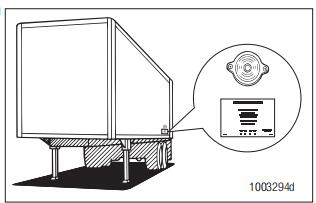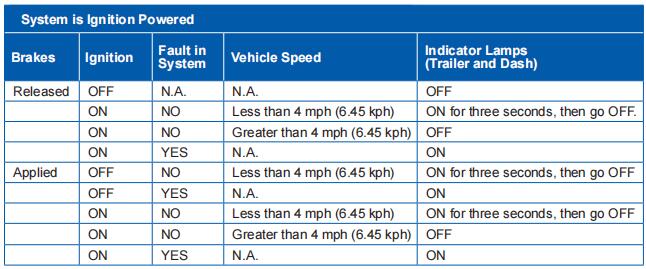Here collect frequency questions and answers,if you have same problem please check below.
Related Contents:
Meritor Wabco Toolbox v13.6 v12 Diagnostic Software Download
RSSplus Components and Features
The Electronic Control Unit (ECU)
How do you activate the ECU?
In a constant-powered system, the ECU activates and then begins a self-diagnostic check of the system when you turn the ignition ON. In a stoplight-powered system, the ECU activates when you apply the brakes. All trailers manufactured on or after March 1, 1998 will be equipped with ABS that has constant power capability with stoplight power as back-up.
How does the ECU respond to a wheel approaching lock-up?
The ECU directs the ABS relay valve to function as a modulator valve and adjust air pressure to the chambers up to five times a second. This pressure adjustment allows a wheel (or wheels) to rotate without locking.
Roll Stability Support Questions and Answers
What is Roll Stability Support?
Roll Stability Support (RSS) is an integrated capability in the RSSplus™ ECU that helps reduce the
chances of a trailer rollover. By monitoring the trailer’s speed, braking and side-to-side acceleration, the RSSplus™ assists the driver in avoiding a potential rollover condition.
How does it work?
The RSSplus™ ECU continuously monitors the trailer’s wheel speed and lateral acceleration. When the ECU detects a potentially unstable condition, it requests data from the suspect wheels with a test pulse.
The trailer’s reaction to the test pulse determines whether normal braking, ABS braking, or Roll Stability braking is required. The test pulse is not generated under normal braking conditions.
Will trailers with Roll Stability Support work with tractors that have standard ABS only?
Yes. WABCO’s trailer Roll Stability Support systems will work with standard tractor ABS made by different manufacturers.
Will trailers with Roll Stability Support work with trailers that have standard ABS only?
Yes. WABCO’s trailer Roll Stability Support systems will work with non-Roll Stability Support ABS systems.
Additional pneumatic considerations are shown in Figure 4.9 in Section 4. Plumbing a non-Roll Stability Support ABS system with a Roll Stability Support system can easily be accomplished by following the patented WABCO P5 plumbing instructions.
Power Line Carrier (PLC) Communications Questions and Answers
What is PLC communications?
PLC stands for Power Line Carrier, which is a method used to communicate information by multiplexing data on the same wire used for the ABS electrical power. PLC communications convert signal message data to a radio frequency (RF) signal on top of the +12V power line providing electrical power to the trailer.
What is multiplexing?
Multiplexing means communicating multiple signals or messages on the same transmission media. This provides an efficient and cost effective means by decreasing the number of wires and connectors which otherwise would be needed. Without multiplexing, it could take several wires and connections in order to transmit several different signals to various locations on a vehicle, but with multiplexing these wires and connectors can be significantly reduced.
Why add PLC technology to tractor and trailer ABS?
By adding PLC technology to the tractor and trailer ABS the industry is able to have the most cost
effective means to meet the March 1, 2001 FMVSS-121 in-cab trailer indicator lamp mandate with no additional external hardware, harnesses or connectors. Additionally, this new capability of communicating other information between tractor and trailers provides many more opportunities to further improve productivity and safety. With every tractor and trailer currently built having ABS technology, integrating PLC technology into the PC board was the logical choice.
How does it work?
The trailer ABS with PLC takes message information to be sent to the tractor and converts it to an RF signal. The signal is then sent over the trailer ABS power line (blue wire) and the tractor ABS with PLC receives the signal. Messages can also be sent from the tractor to the trailer via PLC.
What if a tractor is equipped with PLC technology and the trailer is not, or vice-versa?
Will the tractor and trailer ABS function correctly?
Yes. If the tractor is equipped with PLC and the trailer is not, or vice-versa, your ABS in-cab trailer indicator lamp will not illuminate, but your ABS will continue to function as normal. To ensure that the trailer ABS is functioning correctly, the trailer ABS indicator lamp mounted on the trailer should be utilized.
What if a tractor has one manufacturer’s ABS with PLC and the trailer has another manufacturer’s
ABS with PLC? Will the two systems be compatible and operate the trailer ABS lamp as expected?
Yes. ABS with PLC from different manufacturers are designed to be compatible by controlling the trailer ABS lamp according to the FMVSS-121 standard, even when systems from different manufacturers are connected to each other. However, certain features beyond the control of the trailer ABS indicator lamp may or may not be supported by all devices communicating via PLC. SAE task forces continue to standardize common messages so that maximum compatibility may exist in the future.
How do I diagnose PLC?
PLC can be diagnosed over the J1587/J1708 diagnostic connector on the tractor or on the trailer using tools designed for PLC diagnostics.
Can I use blink code diagnostics on Enhanced Easy-Stop™ to diagnose PLC?
Yes. Section 7 of this manual describes the method of performing a blink code check using Constant Power (ignition activation). Blink Code 17 indicates a PLC failure.
If PLC does not seem to be operating correctly, but I don’t get a Blink Code 17 when I run a blink code check, what else could be wrong?
If there is no Blink Code 17, the PLC is functioning correctly and does not need to be replaced; however, there could be a problem in the trailer’s wiring harness. Check the wiring system and make the necessary repairs. If the problem persists, contact WABCO for assistance.
ABS Indicator Lamps
When replacing the bulb, to ensure correct lamp operation use an incandescent type DOT approved lamp, or a LED with integral load resistor.
ABS Indicator Lamp (on Dash)
With RSSplus™, there are two ABS indicator lamps; one on the vehicle dash and one on the side of the trailer.
ABS Indicator Lamp (on Trailer)
What is the function of the ABS indicator lamp?
The indicator lamp enables a driver to monitor the ABS at all times. Refer to the OEM operating manual for the mounting location of the indicator lamp.
How does the indicator lamp operate?
How the indicator lamp operates depends on whether the ABS is powered by stoplight or constant power:
If the trailer was manufactured prior to February 28, 1998, or was manufactured outside of the United States, the ABS may be either stoplight or constant powered.
If the trailer was manufactured March 1, 1998 or later — and was manufactured in the United States — it will have constant power capability. This is mandated by Federal Motor Vehicle Safety Standard (FMVSS) 121.
Check your vehicle specification sheet to determine the type of ABS power. Table B in this section illustrates indicator lamp operation on constant powered ABS systems.
What does the trailer ABS indicator lamp mean to service personnel?
The trailer ABS indicator lamp on the side of the trailer indicates the status of the trailer ABS. If it comes ON and stays ON when you apply the brakes to a moving vehicle, there is an ABS malfunction. It is normal for the lamp to come ON and go OFF to perform a bulb check, but it should not stay ON when the vehicle is moving above 4 mph (6.45 kph). As with any safety system, it is important not to ignore this indicator. If the indicator lamp indicates a malfunction, the vehicle can be operated to complete the trip, but it is important to have it serviced as soon as possible using the appropriate maintenance manual to ensure correct braking performance and that the benefits of ABS remain available to your drivers.

Typical ABS Indicator Lamp Mounting Location on Side of Trailer
Can you continue to operate a vehicle when the indicator lamp indicates a fault?
Yes. When a fault exists in the ABS, standard braking returns to the affected wheel, and the ABS still controls other monitored wheels. This lets you complete the trip. You should not ignore the indicator lamp and should have the vehicle serviced as soon as possible after the lamp comes ON and stays ON. Indicator lamp operation is shown in Table B.
TABLE B: Constant Power, System is Ignition Powered

Types of Faults
What is a “fault” in the system?
A fault in the system is a problem that can exist in the ABS or in the system’s components. Faults can be either existing faults or intermittent stored faults.
What is an existing fault?
An existing fault is a problem that exists currently in the system. For example, a damaged sensor cable is an existing fault that the ECU will detect and store into memory until you identify the cause, repair the cable and clear the fault from the ECU. An existing fault is also referred to as an “active” fault.
What is an intermittent fault?
An intermittent fault is a problem that usually occurs only under certain driving conditions. For example, the ECU may detect a loose cable or wire or receive an erratic signal from a wheel sensor. Since intermittent faults can be unpredictable and may only happen periodically, you can use information stored in ECU memory to find and correct the loose cable or wire. An intermittent fault cannot be retrieved using blink codes. An intermittent fault is also referred to as a “stored” fault.
Is an intermittent fault difficult to locate and repair?
It can be, because you may not be able to easily see the cause of the problem. WABCO recommends that you write down intermittent faults to help you isolate a fault that recurs over a period of time.
Can the ECU store more than one fault in memory?
Yes. And the ECU retains existing and intermittent faults in memory even when you turn OFF the power to the ECU.
What if the ECU finds a fault in an ABS component during normal operation?
If the ECU senses a fault in the system (with an ABS valve, for example), the ECU turns the trailer ABS indicator lamp on and returns the wheel controlled by that valve to standard braking. Or, if the ECU finds a fault with one wheel speed sensor in a system that has four sensors on a tandem axle, the ECU uses information from the other sensor on the same side of the tandem to ensure continuous ABS function. The ECU continues to provide full ABS function to the wheels unaffected by system faults. However, the ECU will turn the trailer ABS indicator lamp on to tell the driver a fault has been detected in the system.